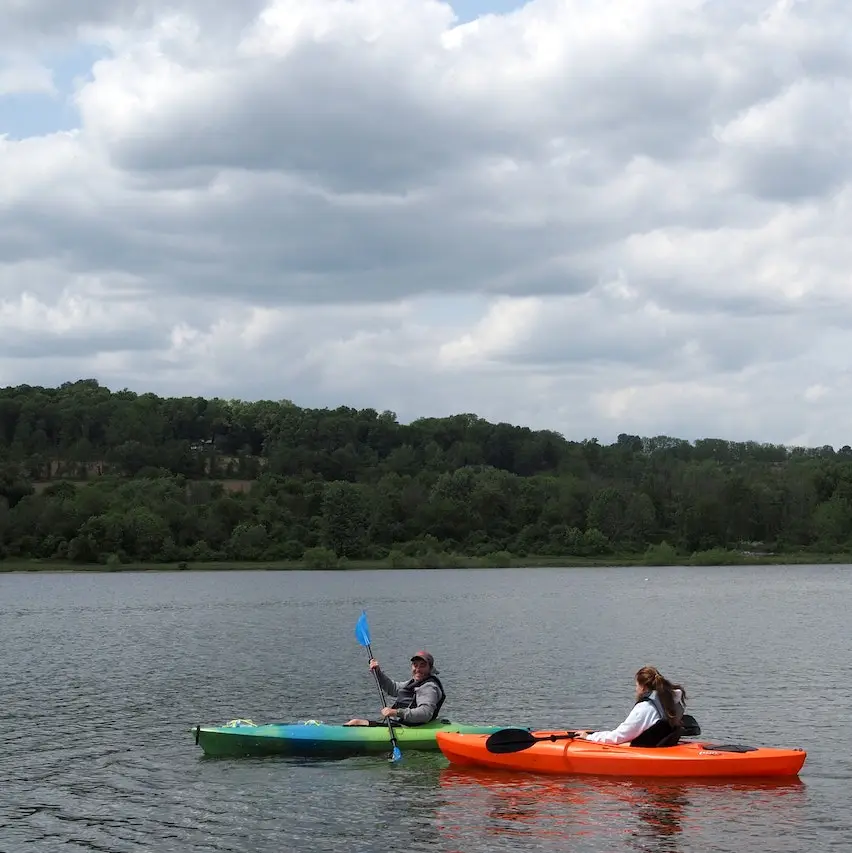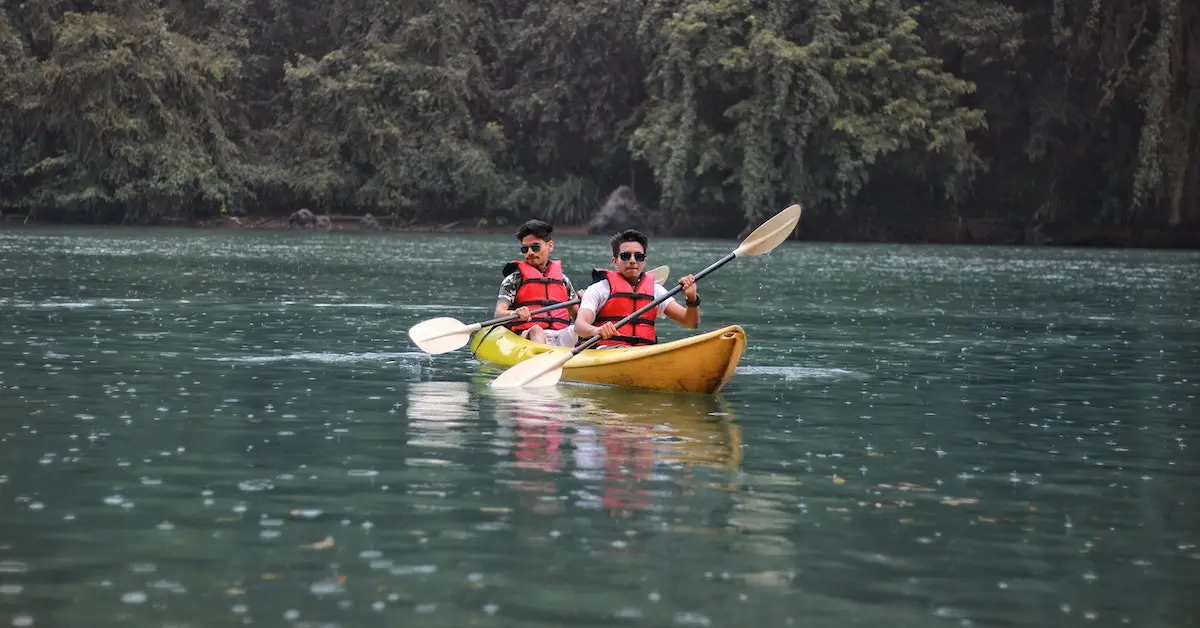Navigating rivers and streams in a kayak can be an exhilarating experience, offering a unique perspective of nature’s beauty. However, the presence of low head dams poses a significant and sometimes underestimated risk to kayakers. These “drowning machines,” as they are ominously referred to, can turn a pleasant kayaking trip into a life-threatening situation. This article aims to educate kayakers on how to recognize, avoid, and—if necessary—escape a low head dam safely.
Understanding the Danger: What Is a Low Head Dam?
Before discussing escape tactics, it’s crucial to understand what a low head dam is and why it’s so dangerous.
Anatomy of a Low Head Dam
A low head dam is a custom-made structure, usually less than 15 feet high, that stretches across a river or stream. While these dams can serve various purposes like water retention or energy generation, they create a turbulent hydraulic “boil” on the downstream side. This boil is a circular current that traps anything caught in it, including boats, debris, and unfortunately, kayakers.
Why They’re Dangerous
The hydraulic of a low head dam is incredibly powerful and unforgiving. The water circulating in the boil pushes objects down to the bottom, then up to the surface, and back towards the dam, in a continuous loop. This makes it exceedingly difficult for a trapped kayaker to escape, even with safety equipment.
Recognizing a Low Head Dam
One of the most effective ways to ensure your safety while kayaking is to recognize a low head dam well in advance.
Signs and Markings
Some low head dams have signs or markings indicating their presence, but this is not always the case. Always consult local maps and guidelines before embarking on a kayaking trip.
Environmental Cues
Pay attention to environmental cues such as a horizon line where the river seems to disappear, a sudden drop in elevation, or a loud rushing noise. All these can indicate the presence of a dam.
Avoidance is the Best Policy

The best way to deal with a low head dam is to avoid it entirely.
Plan Your Route
Before setting out, familiarize yourself with the waterway you’ll be navigating. Know where the low head dams are located and plan to portage (carry your kayak overland) around them.
Read More: 3 Kayaks in Truck Bed? What You Need to Know
Paddle with a Group
When kayaking in unfamiliar territory, it’s always safer to paddle with a group. More eyes can help in recognizing the early signs of a low head dam, and having additional people can be crucial in performing a rescue if someone gets trapped.
Escaping a Low Head Dam: Emergency Measures
Despite all precautions, if you find yourself approaching a low head dam without enough time to avoid it, immediate action is crucial.
Paddle Perpendicular to the Current
Your natural instinct might be to paddle away from the dam, directly upstream. However, given the strong currents, you’ll likely not make much headway. Paddle hard to the side, perpendicular to the current, to escape the boil’s pull.
Abandon Ship if Necessary
If you’re too close and can’t paddle out of the current, your next best option is to abandon your kayak. Aim to swim diagonally downstream and to the side, away from the boil.
The Last-Resort Swim
As a last resort, if you’re trapped in the hydraulic boil, ball up and allow yourself to be pushed to the bottom. Once there, try to crawl along the bottom, downstream and out of the boil. This is risky and should be your last resort.
Additional Tips for Kayaking Safety
Escaping a low head dam is a high-stakes situation that nobody wants to experience. To further equip yourself for safe kayaking, consider these additional tips:
Pre-Trip Preparations
Equipment Check
Before setting out, make sure all your gear is in top shape. Your life jacket, helmet, and kayak should be free of defects. Carry a whistle and a waterproof bag containing a first aid kit, extra clothing, and snacks.
Emergency Contacts
Always let someone know where you’re going and when you plan to return. Carry a waterproof phone or a two-way radio for emergencies.
On-Water Awareness
Weather Forecast
Always check the weather forecast before your trip. Sudden changes in weather can dramatically affect water levels and currents, increasing the risk associated with low head dams.
Water Conditions
Look for reports or indicators of the water’s flow rate, which can affect the hydraulic power of a low head dam. High flow rates can make these dams even more dangerous.
Skill Development
Rescue Training
Being trained in swiftwater rescue techniques can not only help you but also equip you to assist others in dangerous situations. Look for certified courses in your area.
Regular Practice
Practice makes perfect. The more comfortable you are maneuvering your kayak in various conditions, the better you’ll be able to handle emergency situations.
Community Involvement: Making Low Head Dams Safer
While the responsibility for safety lies with the kayaker, communities can also take steps to minimize the risks posed by low head dams.
Improved Signage
Lobby for better signage and warnings about low head dams in your community. These should be placed well ahead of the dam to allow ample time for kayakers to exit the water.
Dam Modification or Removal
In some cases, low head dams that are no longer serving their original purpose can be modified or removed to improve river safety. Organizations like American Whitewater are actively involved in such initiatives.
Post-Escape: What To Do Next
If you’ve managed to escape, your first priority should be to get to a safe location, away from the dam’s influence. Assess your condition and seek medical attention if necessary.
Conclusion
Low head dams pose an unassuming yet deadly risk to kayakers. Recognizing their presence, taking steps to avoid them, and knowing how to escape if caught are crucial skills that every kayaker should possess. Always respect the power of water and take adequate precautions to ensure a safe and enjoyable kayaking experience.
Read more about kayaks:
- What to Wear for Kayaking in Summer
- How to Store a Kayak in the Garage
- What is a Skeg on a Kayak
- What is a Tandem Kayak
- How to Build a Homemade Kayak Launch
- How to Get in a Kayak
- What to Wear for Kayaking?
- How to Transport a Kayak Without a Roof Rack?
- How to Build a Kayak Rack for an RV?
- Are Inflatable Kayaks Safe?
- How to Build a Rack for Kayaks?
- Do Kayaks Have a Weight Limit?
- Wilderness Systems Pungo 120 Kayak Review
- Is it hard to kayak?
- How to Lock a Kayak?
- Where to Kayak with Manatees?
- Pungo 120 vs 125: Which is the Better Choice?
- Tips to Prevent a Kayaking Flip Over and Stay Safe
- What is a Good CFS for Kayaking?

Hi, I’m Steve, the passionate kayaking enthusiast behind Outdoor Bravo. As an avid adventurer and nature lover, kayaking has been a central part of my life for as long as I can remember. My love affair with the water began during my childhood, and it has only grown stronger over the years. From serene lakes to rushing rivers and even challenging ocean tides, I’ve navigated various water bodies, seeking new thrills and unforgettable experiences.
